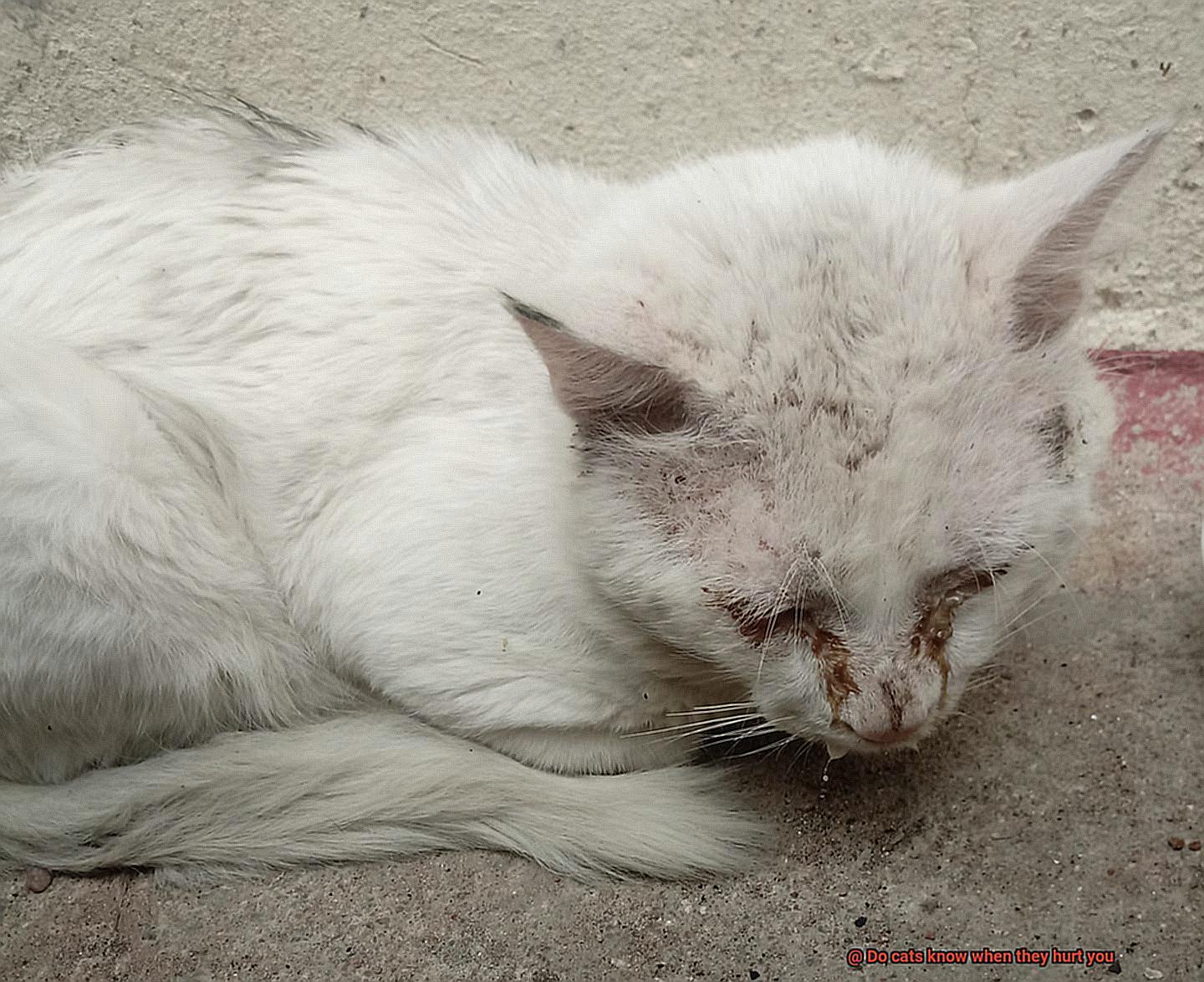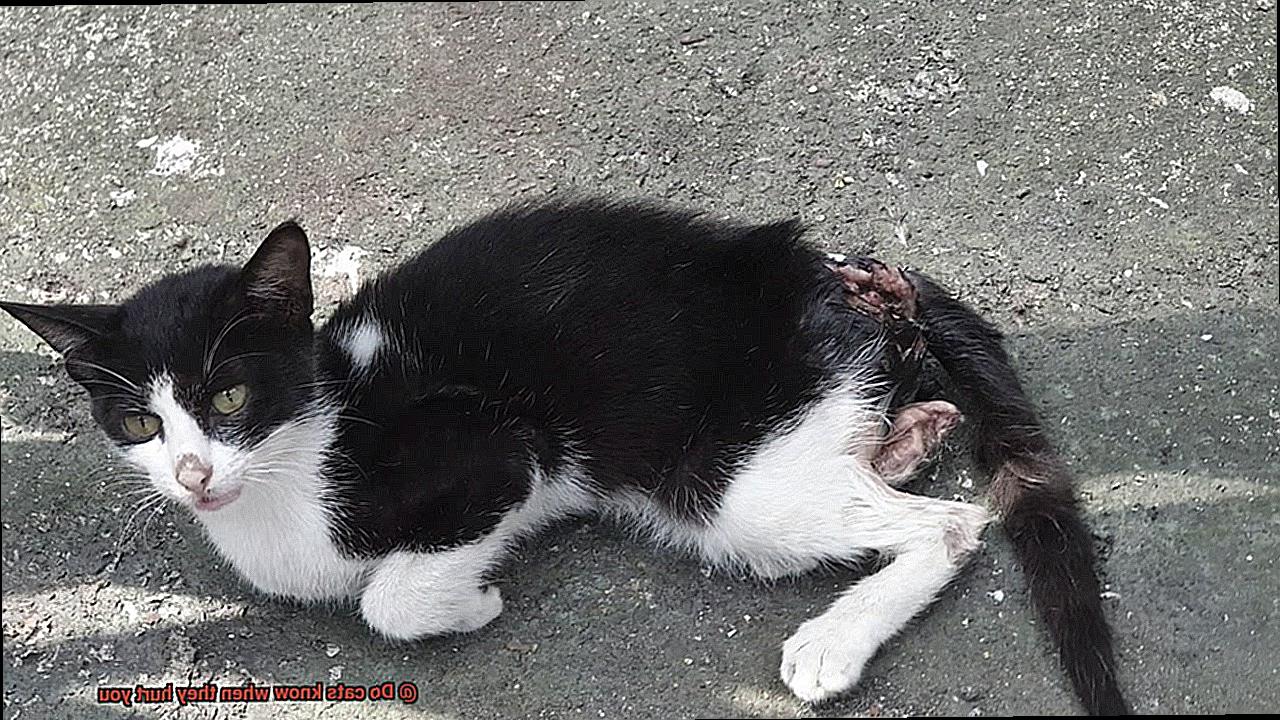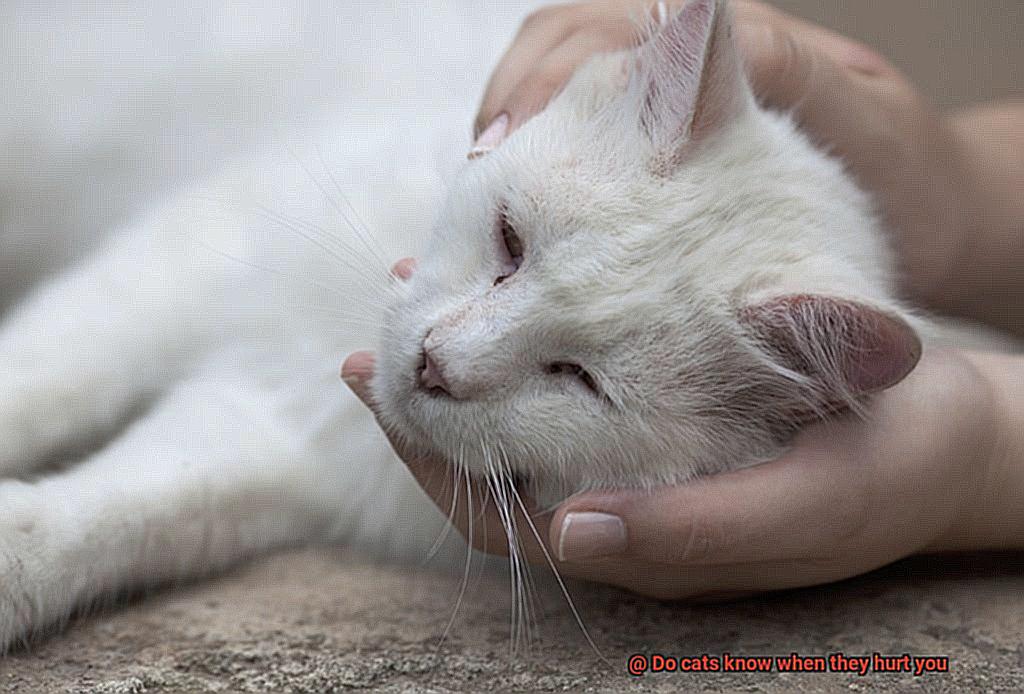Cats are undoubtedly one of the most beloved and popular pets in the world. Their cute appearance and playful nature make them a joy to be around. However, as delightful as they may be, there are times when our feline friends can unintentionally cause us pain or discomfort. This often leads us to wonder if cats know when they hurt us.
The question ‘Do cats know when they hurt you?’ is a fascinating one that has puzzled cat owners for years. Some believe that cats lack the cognitive ability to understand the concept of pain, while others insist that these creatures are fully aware of their actions.
In this blog post, we will explore this intriguing topic in detail and provide answers to all your questions. We will examine the behavior of cats, their senses, and their cognitive abilities to determine whether they know when they cause harm to their human companions. Additionally, we’ll look at how subtle their response can be towards causing pain and whether their intentions behind their actions matter.
So if you’ve ever been scratched or bitten by your furry friend while playing together and wondered if they knew what they were doing, then you’re in the right place. Keep reading to discover more about whether cats know when they hurt you.
Do Cats Recognize When They Have Hurt Their Owner?
Well, the answer is yes. While cats may not have the same emotional intelligence as humans, they are highly perceptive animals that can read body language and vocal cues. So, if your cat accidentally scratches or bites you, they will likely pick up on your reaction, such as a yelp or pulling away, which can indicate to them that they have caused pain.
Additionally, cats may have an understanding of cause and effect. If a cat bites their owner and is immediately scolded or punished, they may associate the punishment with their own behavior and recognize that they have done something wrong. However, it’s important to note that cats do not feel guilt or remorse in the same way as humans. Instead, they may simply adjust their behavior in response to negative feedback from their owner.
So, how do cats show their awareness of causing pain? Well, they may become more cautious and skittish around their owner or avoid them altogether. They may also become more vocal than usual, meowing in a distressed tone as if trying to communicate their concern.
In some cases, cats may even try to comfort or apologize by rubbing against the injured area or licking the affected skin.
It’s important to remember that not all cats will respond in the same way when they hurt their owner. Some may show no reaction at all, while others may become aggressive or defensive. In these situations, it’s best to give the cat space and avoid any further interaction until they have calmed down.
As responsible pet owners, it’s crucial to monitor our interactions with our furry friends and take precautions to prevent accidents from occurring in the first place. Punishment is not an effective solution and can harm the relationship between cat and owner.
Instead, providing positive reinforcement and redirection of unwanted behaviors can lead to a happier and healthier bond.
How Cats Show Awareness of Hurting their Owner
One of the most common ways cats show awareness of hurting their owner is through grooming. Cats have a natural instinct to groom themselves and others, and if they accidentally scratch or bite their owner, they may use this behavior to apologize or offer comfort. By licking the affected area, cats can soothe their owner’s pain and show concern for their well-being.

Another way cats show awareness of hurting their owner is by avoiding them. Cats are highly sensitive to their owner’s emotions, and if they sense discomfort or pain, they may steer clear to prevent further harm. While it may seem like your cat is being distant or cold, it’s actually a sign that they are aware of the situation and trying to avoid making things worse.
Cats may also express their apologies or concern vocally. They may meow or purr in a soothing manner to offer comfort or express regret for their actions. This behavior not only shows that cats are capable of empathy towards their owners but also adds to the adorable factor.
In some cases, cats may even seek out help from their owner if they notice that they are hurt. For example, if your cat accidentally steps on your foot and sees that you’re limping, they may meow or rub against you to alert you to the injury. This behavior shows that cats not only understand cause-and-effect but also know how to be helpful in times of need.

Overall, while cats may not have human-level understanding when it comes to causing harm, they are still capable of showing empathy and concern towards their owners when they accidentally hurt them.
Different Responses from Cats to the Pain They Have Caused
It’s important to keep in mind that cats don’t experience emotions like guilt and shame the same way as humans do. However, they are intelligent enough to recognize when their actions have caused a reaction from their human companions.
One common response from cats is to retreat and hide. It may seem like they don’t care, but it’s actually because they sense that something is wrong and want to avoid further conflict or negative feedback. In these cases, it’s important to give them space and time to come out of hiding when they feel comfortable.
Another response from cats is to become more affectionate than usual. They may rub against their owner more frequently or purr louder than usual as a way of showing their love and affection. This can be seen as a way for the cat to apologize or seek reassurance from their owner.

However, some cats may not show any response at all when they have caused pain. This could be because they lack emotional intelligence and don’t understand the effect of their actions on others. It’s important to remember that cats are not malicious creatures and do not intentionally hurt their owners.
Regardless of the response from the cat, it’s crucial for owners to address any pain or injuries caused by their pets. Seeking medical attention for the person or animal affected should be a priority.
Additionally, training and behavior modification methods with the cat can also help prevent future incidents.
Tips for Responsible Pet Owners
It’s important to be aware of your cat’s needs and emotions to prevent any unintentional harm. Here are five tips that can help you become a more responsible pet owner by understanding your cat’s body language and behavior.
Observe Your Cat’s Body Language
Cats use their body language to communicate their emotions. If your cat is feeling angry or stressed, they might arch their back, puff up their fur, or hiss. These signs indicate that they need space and should not be touched until they calm down. As a responsible pet owner, it’s essential to observe your cat’s body language to ensure their safety and well-being.

Be Gentle When Playing With Your Cat
Playing with your cat is an essential part of bonding and keeping them active. However, it’s crucial to be gentle during playtime to avoid any accidental scratches or bites. Avoid using your hands as toys and opt for soft toys or a laser pointer to keep them entertained.
Trim Your Cat’s Nails Regularly
Cats have sharp claws that can cause accidental scratches. Trimming your cat’s nails regularly can reduce the likelihood of such injuries. Use proper nail clippers designed for cats, and be careful not to cut too close to the quick, which can cause pain and bleeding.
Provide Plenty of Scratching Posts
Scratching is a natural behavior for cats, and they need to scratch to maintain healthy claws and stretch their muscles. Providing multiple scratching posts around your home can prevent your cat from scratching furniture or other items that could potentially hurt you. This will also ensure that your furniture remains intact.
Regular Vet Check-Ups
Bringing your cat to the vet for regular check-ups can help identify any underlying health issues that could cause pain or discomfort. Additionally, if you notice any changes in your cat’s behavior or if they seem to be in pain, it’s important to seek veterinary care immediately.
As a responsible pet owner, regular vet check-ups are essential for maintaining your cat’s overall health and well-being.

Common Misconceptions About Cat Behavior
However, this is far from the truth. While cats may not express their emotions in the same way as dogs, they still have a range of emotions and can feel pain themselves. In fact, cats are masters at hiding their pain and discomfort, which can make it challenging for owners to recognize when something is wrong.
That being said, just because cats are good at masking their pain does not mean they do not understand when they cause pain to their owners. Cats are intelligent animals that can learn from their experiences. If a cat accidentally scratches or bites their owner and receives a negative response or punishment, they may learn to associate that behavior with negative consequences and try to avoid it in the future. This demonstrates that they can understand cause and effect and learn from their actions.
However, it is essential to note that there are situations where cats may intentionally hurt their owners if they feel threatened or scared. This behavior is often observed in cats that have not been socialized correctly or have experienced trauma in the past.
In such cases, it is crucial for owners to seek professional help and work with their felines to address any underlying behavioral issues.
KrA8jn1ZIz4″ >
Conclusion
To sum up, the question of whether cats know when they hurt us has been a topic of discussion among cat owners for years. Some believe that cats lack the cognitive ability to understand pain, while others argue that they are fully aware of their actions.
However, as we have learned from this article, cats are intelligent creatures that can learn from experiences and pick up on social cues.
Although cats may not possess the same emotional intelligence as humans, they can recognize when they’ve caused their owner pain and try to make amends. They display awareness of hurting their owner through various behaviors like grooming, avoiding them, becoming more vocal or affectionate than usual, or seeking help if they notice an injury.
Iit’s essential to monitor our interactions with our feline friends and take precautions to prevent accidents from happening in the first place. We need to observe our cat’s body language closely and handle them gently during playtime. Regularly trimming their nails, providing plenty of scratching posts, and taking them for regular vet check-ups is also crucial.







